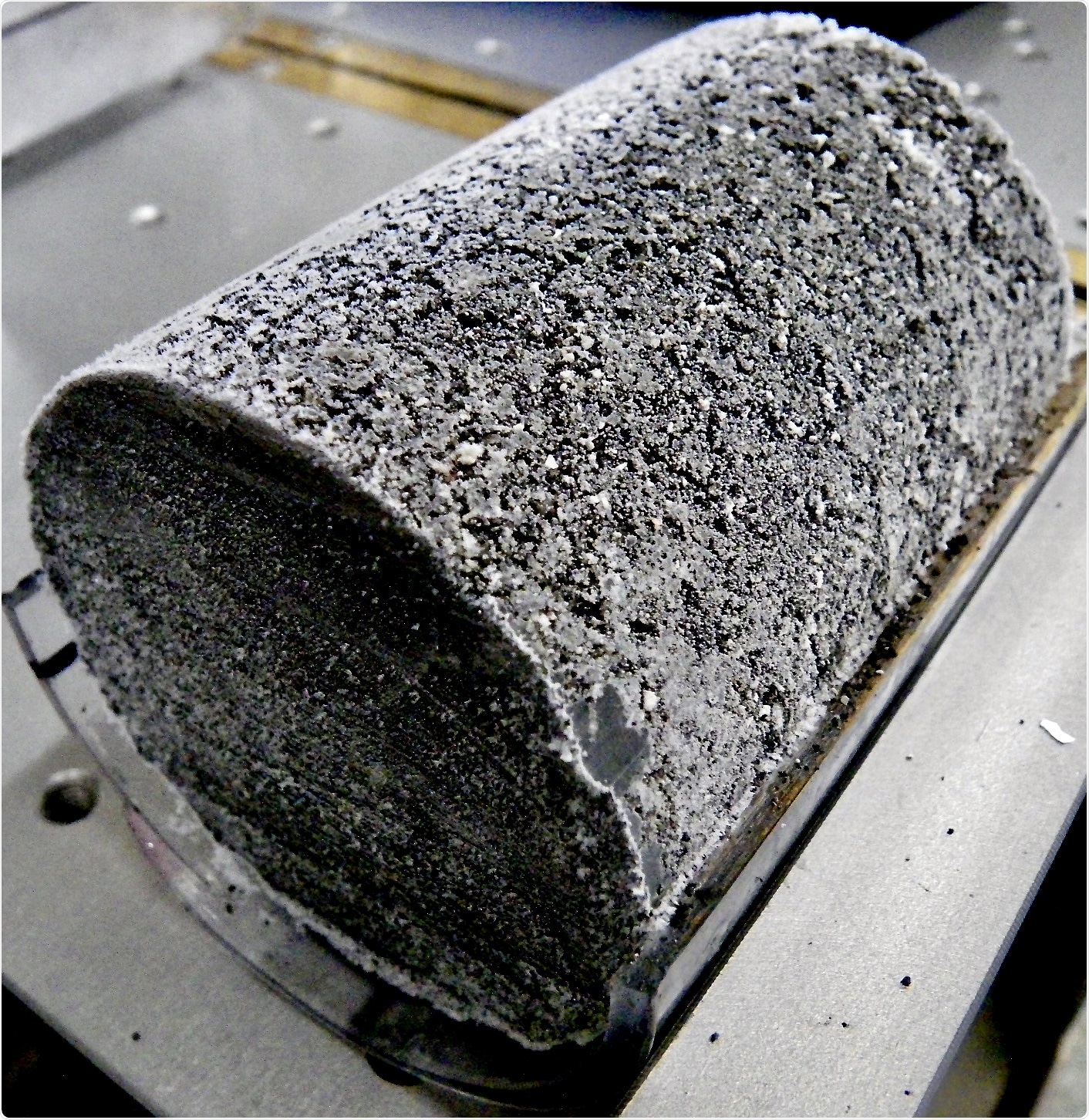Scientists have mapped, for the first time, the biological diversity of marine sediment, which is considered as one of the largest global biomes on Earth. Marine sediment covers about 70% of the Earth’s surface, but not much is known about its global patterns of microbial diversity.

A deep-frozen sediment core that was frozen on board immediately after sampling for microbiological analysis. DNA was extracted from the frozen core in a clean room. Image Credit: Japan Agency for Marine-Earth Science and Technology.
A group of scientists from the Japan Agency for Marine-Earth Science and Technology (JAMSTEC), the University of Hyogo, the University of Kochi, the University of Bremen, and the University of Rhode Island outlined the global diversity of microbes in marine sediment.
As part of the study, which was published in the Proceedings of the National Academy of Sciences journal, Tatsuhiko Hoshino, a senior researcher at JAMSTEC, and his collaborators, including URI Graduate School of Oceanography Professor Steven D’Hondt, examined 299 samples of marine sediment collected as core samples from 40 different locations across the world.
The sample depths varied from the seafloor to 678 m beneath it. The authors isolated and sequenced DNA from every frozen sample under the same clean laboratory conditions to accurately identify the diversity of microbial communities.
The 16S rRNA gene sequences (around 50 million sequences) acquired by extensive next-generation sequencing were examined to define the composition of the microbial community in every sample. Of these 50 million sequences, the team identified almost 40,000 distinct types of microorganisms present in marine sediment with diversity normally dropping with depth.
The researchers identified that the composition of the microbial community varies considerably between nutrient-poor sediment of the open ocean and organic-rich sediment of continental margins. The absence or presence of oxygen and the concentration of organic matter are significant factors that govern community composition.
The team compared their outcomes with previous research of seawater and topsoil, finding that each of these three global biomes—topsoil, marine sediment, and seawater—have different microbial communities but similar total diversity.
It was an unexpected discovery that microbial diversity in the dark, energy-limited world beneath the seafloor is as diverse as in Earth’s surface biomes.”
Tatsuhiko Hoshino, Senior Researcher, Japan Agency for Marine-Earth Science and Technology
Moreover, the team combined the estimates of archaeal and bacterial diversity for these three biomes and identified that bacteria are far more diverse when compared to archaea—microbes different from bacteria and known for surviving under extreme environmental conditions—on Earth.
In this respect as well, microbial diversity in the dark realm of marine sediment resembles microbial diversity in the surface world. It’s exciting to glimpse the biological richness of this dark world.”
Steven D’Hondt, Professor, Graduate School of Oceanography, University of Rhode Island
Source:
Journal reference:
Hoshino, T., et al. (2020) Global diversity of microbial communities in marine sediment. Proceedings of the National Academy of Sciences. doi.org/10.1073/pnas.1919139117.